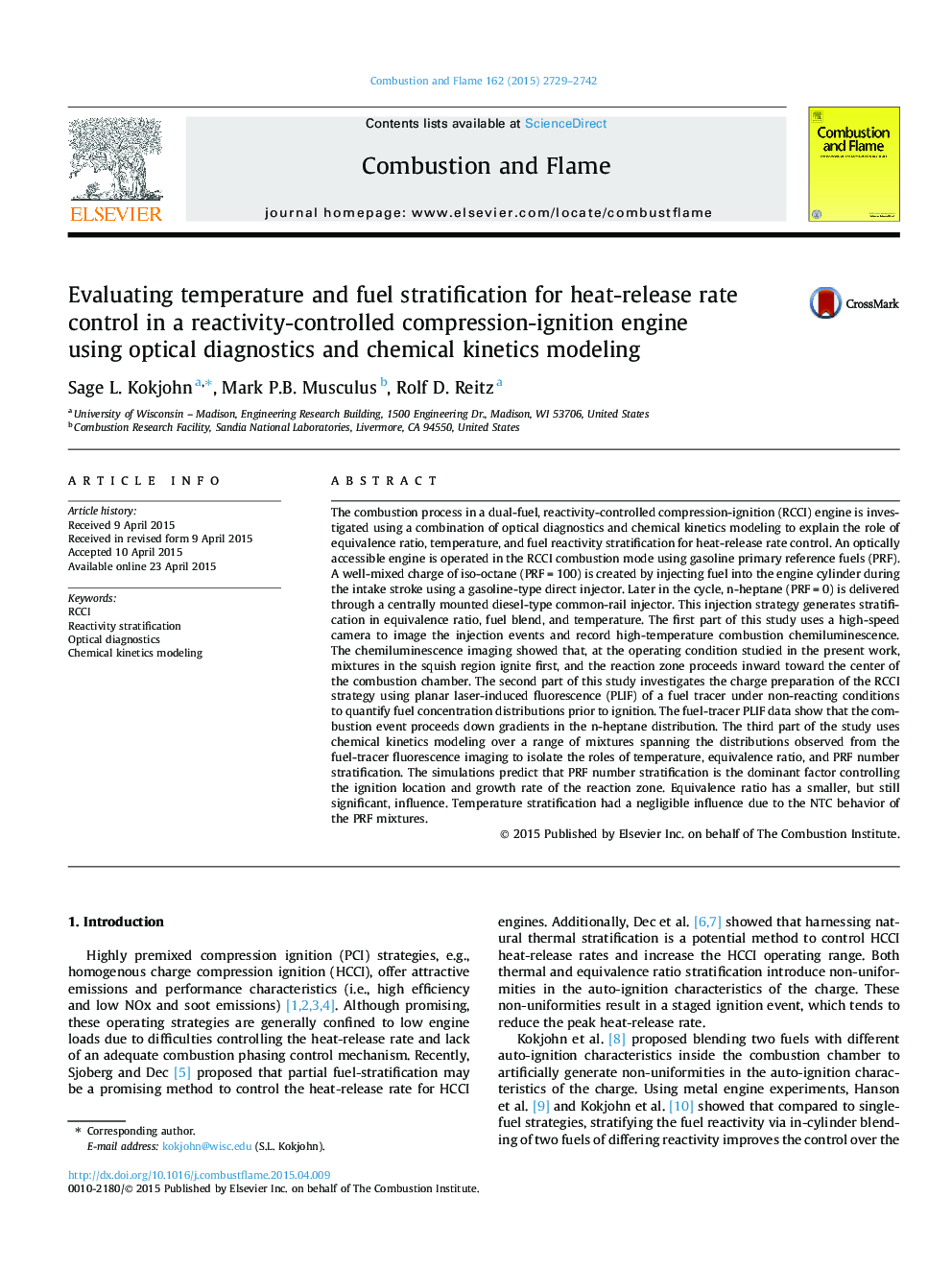| کد مقاله | کد نشریه | سال انتشار | مقاله انگلیسی | نسخه تمام متن |
|---|---|---|---|---|
| 166302 | 457751 | 2015 | 14 صفحه PDF | دانلود رایگان |
The combustion process in a dual-fuel, reactivity-controlled compression-ignition (RCCI) engine is investigated using a combination of optical diagnostics and chemical kinetics modeling to explain the role of equivalence ratio, temperature, and fuel reactivity stratification for heat-release rate control. An optically accessible engine is operated in the RCCI combustion mode using gasoline primary reference fuels (PRF). A well-mixed charge of iso-octane (PRF = 100) is created by injecting fuel into the engine cylinder during the intake stroke using a gasoline-type direct injector. Later in the cycle, n-heptane (PRF = 0) is delivered through a centrally mounted diesel-type common-rail injector. This injection strategy generates stratification in equivalence ratio, fuel blend, and temperature. The first part of this study uses a high-speed camera to image the injection events and record high-temperature combustion chemiluminescence. The chemiluminescence imaging showed that, at the operating condition studied in the present work, mixtures in the squish region ignite first, and the reaction zone proceeds inward toward the center of the combustion chamber. The second part of this study investigates the charge preparation of the RCCI strategy using planar laser-induced fluorescence (PLIF) of a fuel tracer under non-reacting conditions to quantify fuel concentration distributions prior to ignition. The fuel-tracer PLIF data show that the combustion event proceeds down gradients in the n-heptane distribution. The third part of the study uses chemical kinetics modeling over a range of mixtures spanning the distributions observed from the fuel-tracer fluorescence imaging to isolate the roles of temperature, equivalence ratio, and PRF number stratification. The simulations predict that PRF number stratification is the dominant factor controlling the ignition location and growth rate of the reaction zone. Equivalence ratio has a smaller, but still significant, influence. Temperature stratification had a negligible influence due to the NTC behavior of the PRF mixtures.
Journal: Combustion and Flame - Volume 162, Issue 6, June 2015, Pages 2729–2742
